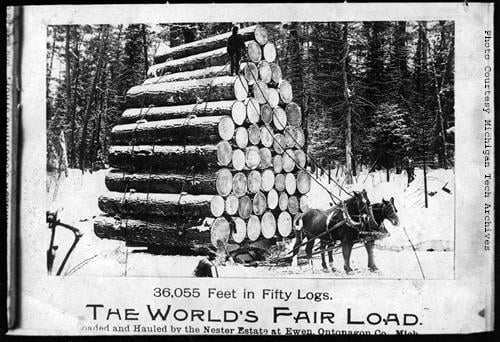
“People, Place and Time: Michigan’s Copper Country Through the Lens of J.W. Nara,” a traveling exhibit created by the Michigan Tech Archives, has moved to the Ontonagon County Historical Society museum in Ontonagon. The exhibit explores the life and times of Calumet photographer J.W. Nara and will be open to the public through September 25 during the museum’s regular hours.
On Friday, September 3, the Society will host a public reception and program in conjunction with the exhibit installation. Erik Nordberg, University Archivist at Michigan Technological University, will give an illustrated presentation, “Michigan’s Copper Country Through the Lens of J.W. Nara” featuring dozens of historical photographs of the Keweenaw. The presentation is scheduled for 2:00 p.m. at the museum complex.
John William Nara was born in Finland in 1874. He later immigrated to the United States and established a photographic studio in Calumet, Michigan, in the heart of America’s most productive copper mining region. In addition to posed studio portraits, J. W. Nara’s lens also captured the people, place, and time he experienced in Michigan’s Keweenaw Peninsula. Copper mining and industry are an important part of the story, but Nara also captured the Keweenaw’s rural landscape, including local farms, shorelines, lighthouses, and pastoral back roads.
The traveling exhibit, funded in part by descendants Robert and Ruth Nara of Bootjack Michigan, works from historical photographs held at the Michigan Tech Archives. Robert and Ruth will be attending the reception. Interpretive panels highlight the people, places, and times that J.W. Nara experienced during his lifetime and include material on urban life, farming, and the 1913 Michigan copper miners’ strike. A small exhibit catalog is available at no charge and includes three Nara photograph postcards from the collection.
The exhibit will remain on display at the Ontonagon County Historical Museum through Saturday, September 25. Its next stop will be the Finnish-American Heritage Center in Hancock, Michigan.